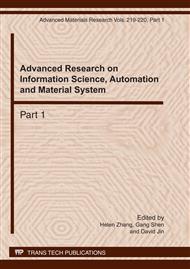p.652
p.656
p.660
p.665
p.670
p.675
p.680
p.685
p.689
Interferometer Environmental Error Compensation Based on Refractive Index’s Spatio-Temporal Coupling Model
Abstract:
By analyzing the length measurement principle of interferometer, the key of environmental error compensation of interferometer is modeling the refractive index distribution along the measurement optical path. The spatio-temporal coupling models of temperature, pressure and humidity were established through the collected data by sensors, using the block pulse operator method. Then the model of refractive index over time along the optical path was obtained by Edlén’s formulation, and the environmental error compensation was achieved. The simulation results of lithography mask stage’s movement environmental flow and measurement showed that this method can compensate interferometer environmental error well, and the following residual error was reduced to less than 1nm so that the resolution level was achieved.
Info:
Periodical:
Pages:
670-674
Citation:
Online since:
March 2011
Authors:
Price:
Сopyright:
© 2011 Trans Tech Publications Ltd. All Rights Reserved
Share:
Citation:


